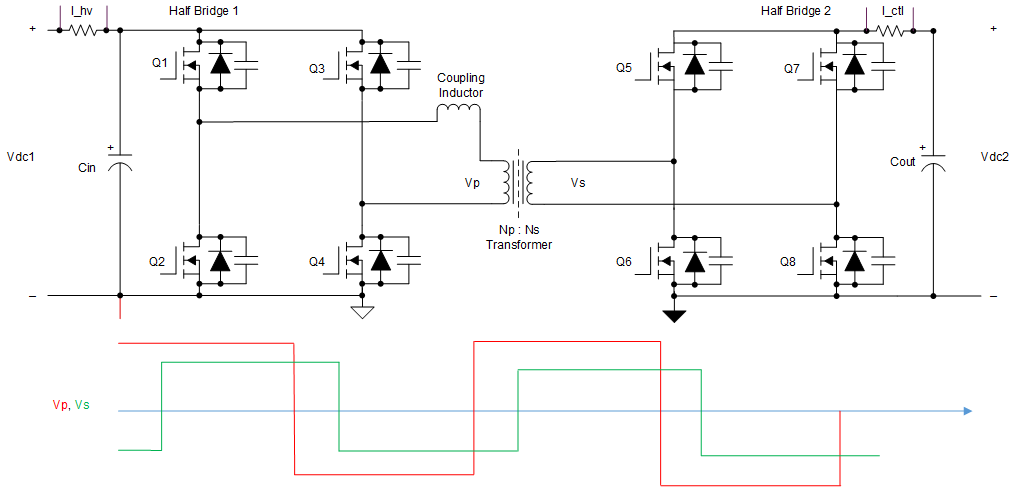TIDUES0E June 2019 – April 2024 TMS320F28P550SJ , TMS320F28P559SJ-Q1
- 1
- Description
- Resources
- Features
- Applications
- 6
- 1System Description
- 2System Overview
- 3Circuit Description
- 4Hardware, Software, Testing Requirements, and Test Results
- 5Design Files
- 6Related Documentation
- 7Terminology
- 8About the Author
- 9Revision History
2.3.1 Dual Active Bridge Analogy With Power Systems
Power transfer between the two bridges in a dual active bridge is analogous to the power flow between two voltage buses in a power system. Consider two voltage sources connected by a line reactance as shown in Figure 2-2.
 Figure 2-2 Power Transfer Between Voltage
Bus
Figure 2-2 Power Transfer Between Voltage
BusFigure 2-2 shows that the voltage source on the right is lagging with respect to the voltage source on the left. Hence, the power transfer takes place from the left towards the right as per Equation 1.
Similarly, power transfer happens in a dual-active bridge where two high-frequency square waves are created in the primary and secondary side of the transformer by the switching action of MOSFETs. These high-frequency square waves are phase shifted with respect to each other. Power transfer takes place from the leading bridge to the lagging bridge, and this power flow direction can be easily changed by reversing the phase shift between the two bridges. Hence, it is possible to obtain bidirectional power transfer with ease in a dual-active bridge as shown in Figure 2-3.
 Figure 2-3 Dual-Active Bridge
Figure 2-3 Dual-Active Bridge